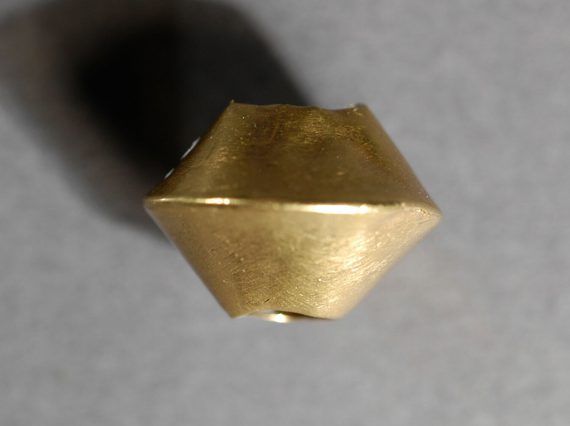
The Adabrock bead
The Late Bronze Age hoard from Adabrock, on the Hebridean Isle of Lewis, is one of the most spectacular hoards from Bronze Age Scotland.
It contains bronze axeheads, spearheads, tools and razors, as well as a decorated bronze vessel, whetstones, and beads made of glass, amber and gold. The hoard can be broadly dated to around 1000–800 BC, the same period as the Skye cup-ended ornament and the Colaton Raleigh bracelets.
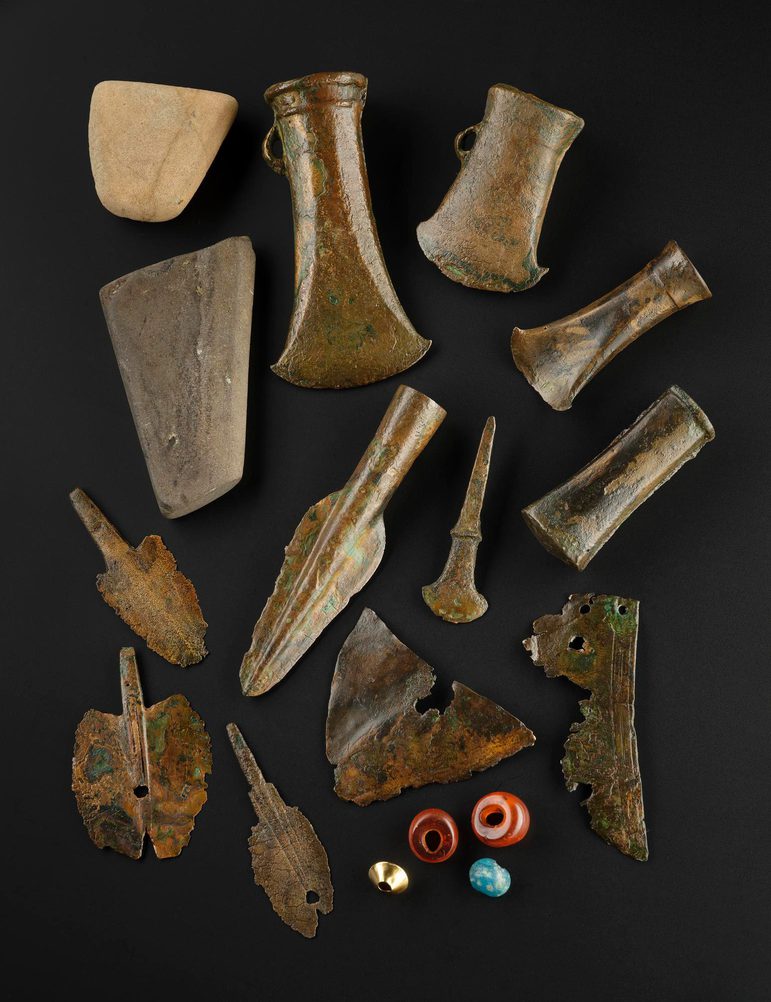
This remarkable gold biconical bead is from this Adabrock hoard. It’s only about 12mm in diameter and is the only one of its kind currently known from Scotland.
Image gallery
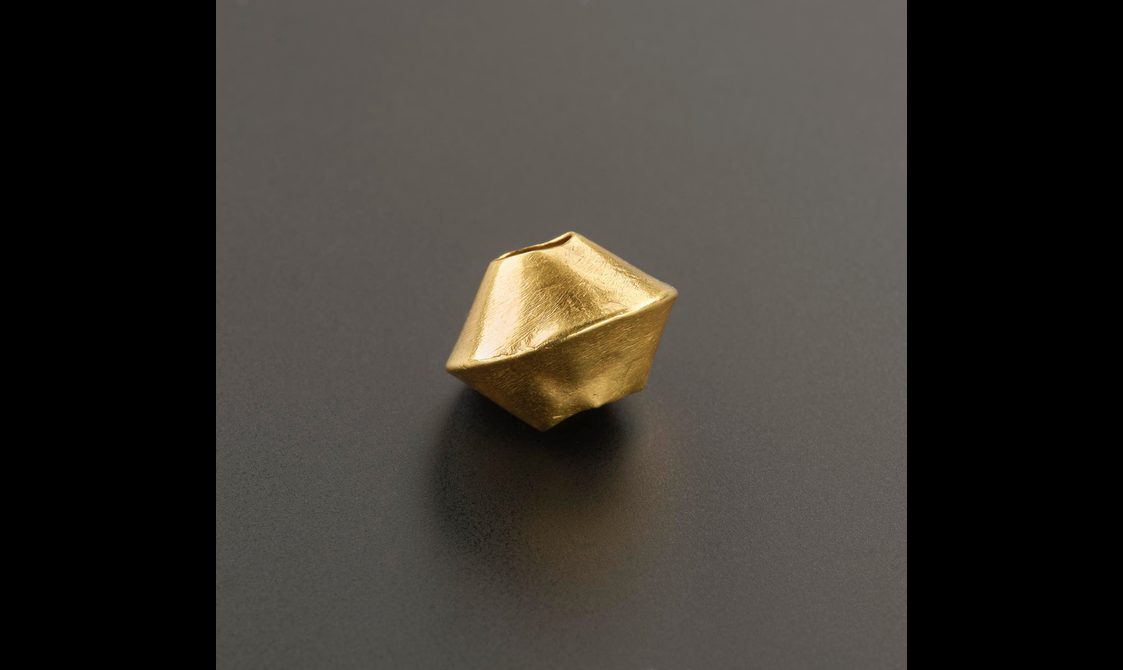
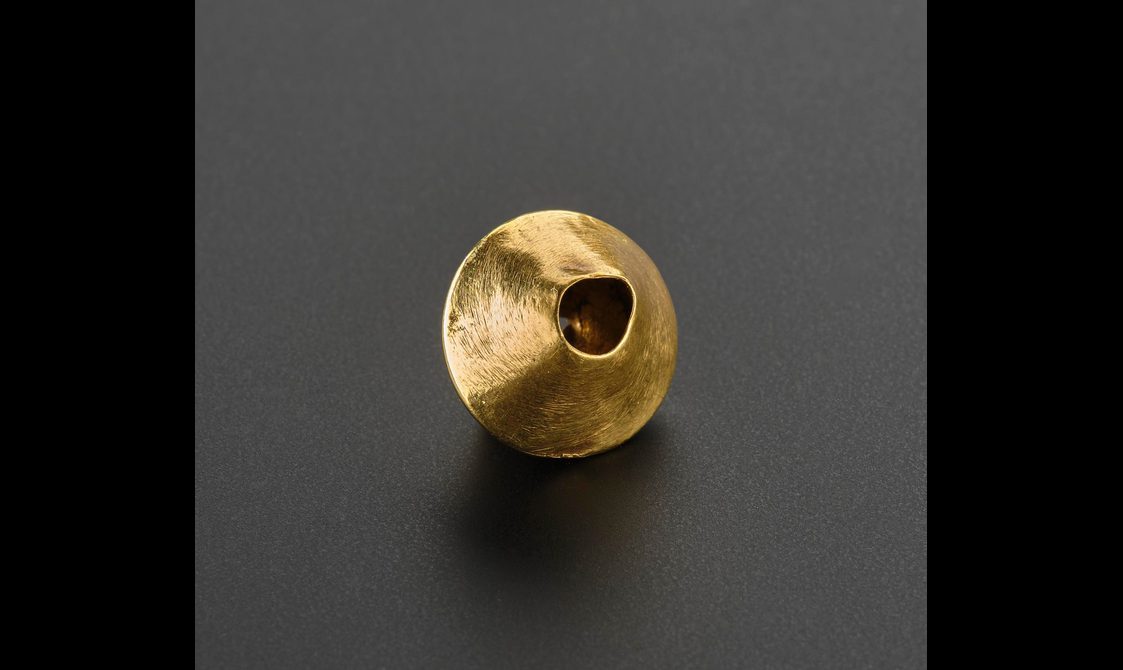

A hoard of gold objects from Beerhackett, Dorset, which contained seven biconical gold beads, is also dated to the Middle Bronze Age. Many single finds of gold beads that have been recovered across England and Wales are usually thought to be of Middle Bronze Age date, though there is no reason why at least some of these couldn’t be Late Bronze Age.
Returning to the Adabrock bead, its place in a large hoard of several different materials is another fascinating aspect that we rarely see in prehistory. Often bronze objects are only buried with other bronze objects, but here we have stone, glass, amber, gold and bronze artefacts all buried together. The bronze tools are of fairly common Late Bronze Age forms, but they are rarely found on the Isle of Lewis. Meanwhile, amber beads crop up in other Late Bronze Age hoards, such as at Balmashanner, Angus, where they were found alongside bronze bracelets and gold lock rings. Bronze Age glass beads are extremely rare in Britain and Ireland.

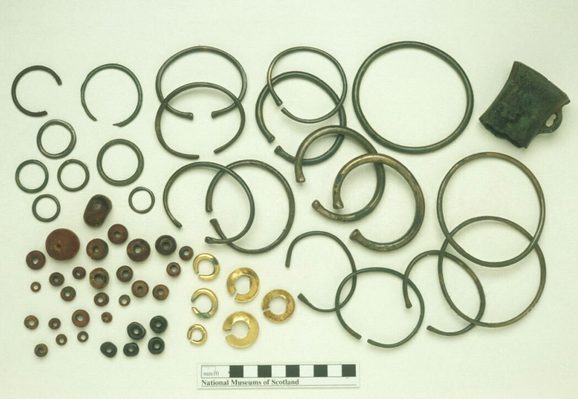
Amber, glass and gold beads would have been rare and prized objects, imported to Lewis from far away. The bronze objects may also have been imported. This all suggests that prehistoric communities on Lewis around 3000 years ago were well connected with other areas in Britain and Ireland through trade and exchange networks.
The Adabrock hoard was recovered from a peat bog, with the smaller objects (including the beads) placed above the larger objects. Peat bogs were common sites of depositional activity in the Bronze Age and the arrangement of the objects in a significant location indicates that this was an intentional gathering and burial of deliberately selected objects.
So where does this leave us with the Adabrock gold bead?
Its fine craftsmanship cannot be denied and in the context of the other objects, it is clear that its burial formed part of an important deposit. The sacrifice of such exceptional and individual objects – many of which must have been difficult to acquire – was probably linked to a significant event. The previous gold objects we have showcased have typically been found either by themselves or with other gold artefacts, but Adabrock emphasises how gold could be incorporated into a whole variety of practices and fit a number of purposes, no doubt driven by unique circumstances.
Acknowledgements
Many thanks to Mary Davis and Barbara Armbruster for their comments on the manufacture of the bead.

Dr Matthew Knight, Senior Curator, Early Prehistory on m.knight@nms.ac.uk